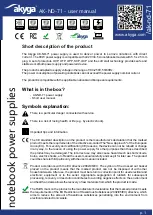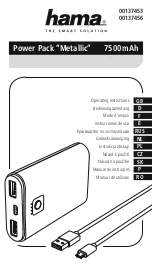
2
Rev. A
Helpful hints for field servicing tool jams
A jam is usually a fastener that has lodged between the driving blade and the nose.
SAFETY FIRST
– Always disconnect tool from air supply before attempting to clear a jam or
servicing.
NOTE:
refer to correct tool schematic for location of parts and correct part numbers.
Open the magazine and remove the remaining fasteners. Some jammed fasteners may be
removed from the magazine side of the tool. Try to remove fastener with a pair of pliers.
Depending on the severity of the jam, the driver blade must be pushed back up into the tool to
allow the jammed fastener to be removed. Push the driver upwards and past the jammed
fastener. As a last resort push driver up by placing a punch at the tip of the driver and tapping
a hammer against the punch.
Only strike the driver,
it is the hardest part in the tool. The
driver is the only part of the tool that moves in this area. If you strike the jammed fastener, you
may cause it to jam worse in tool.
TROUBLESHOOTING
Water inside tools.
•
Water inside tools is a result of natural condensation, settling in tanks and hoses. Drain
tanks and hoses daily, if possible use condensate separators in line with tools.
•
Tools that have had water in them for an extended time tend to have internal
contamination and will perform poorly. Tool should be cleaned and lubricated
Tool does not fully drive fasteners.
•
Air pressure too low, tools should be operated between 70 to 90 psi. (4.8-6.2 bar)
Never over 100 psi (7 bar).
•
Tool not perpendicular to work surface, staples driving at angle.
•
Driver blade worn at tip. Replace driver blade VC4101.
•
Piston o-rings worn or damaged. Replace o-rings upper o-ring VH0525, lower o-ring
VH0528.
•
Air exhaust clogged with dirt or built up old lubricant. Clean exhaust or replace muffler
VH0545.
•
Worn bumper. Replace bumper VC4119.
•
Worn piston plug. Replace piston plug VC4122.
•
Valve assembly worn/leaks. Replace valve assembly or components and o-rings.
•
Dirt/tar build up on driver. Disassemble and clean nose/driver.
•
Valve dry or dirty. Disassemble clean and lubricate.
•
Air volume insufficient. Check fittings and hoses for restrictions. Restrictions can be
moisture, dirt, or hoses and fittings too small for tool volume requirements.
•
Wood not fully supported under area to be stapled.
Piston/driver does not return fully.
•
Bumper cracked or damaged. Replace bumper VC4119.
•
Piston plug cracked or damaged. Replace piston plug VC4122.































